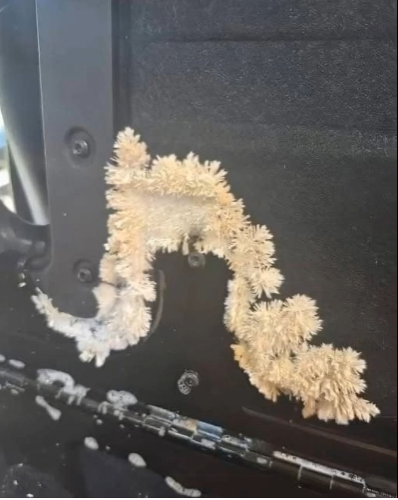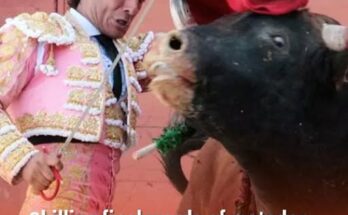
A Quiet Saturday That Took a Dark Turn
It began like any ordinary, peaceful Saturday. The sky was clear, the sun warmed the driveway, and I finally had a rare stretch of free time — perfect for tackling a task I’d been putting off for weeks: giving my car a long-overdue deep clean.
Everything was going according to plan. I vacuumed the floors until they looked brand new, wiped down every inch of the dashboard, and even reorganized the trunk. It felt good — productive, even satisfying — as if I was reclaiming a little order from the chaos of daily life.
Then, on a whim, I decided to check beneath the back seat. It’s one of those forgotten places you never really think about, let alone inspect. I reached under the cushion expecting maybe a few coins or a stray toy from some long-forgotten road trip. But instead, my fingers brushed against something… strange.
It was dry. Brittle. Rough in texture — not quite paper, not quite fabric. I pulled it out slowly. And then I froze.
This wasn’t trash or forgotten junk. It looked biological — some kind of shell or husk. A pale, hollow form, covered in fine, hair-like spines that glinted under the light like tiny needles. My gut told me immediately: this wasn’t normal.
I slipped it into a sealed plastic bag and brought it inside, curiosity battling unease. I sat down and started searching online.
What I found stopped me cold.
It appeared to be the shed exoskeleton of a Lonomia caterpillar — one of the most venomous caterpillars in the world. Native to South America, particularly Brazil and Venezuela, this creature is infamous for its microscopic spines that can cause severe bleeding disorders, internal hemorrhaging, and in rare cases, even death.
And I had just been holding its skin in my bare hands.
Even though it was no longer alive, the threat hadn’t passed. The venomous spines can remain dangerous long after being shed. Horrified, I immediately contacted a local pest control service that specializes in hazardous or exotic pests.
To their credit, they responded quickly. A technician arrived in full protective gear, confirmed the identification, and carefully removed the casing using specialized tools. They didn’t stop there — they conducted a thorough inspection of the entire car: under the seats, in the air vents, the trunk, even the undercarriage. Fortunately, there were no signs of any live caterpillars or additional remnants.
Still, I couldn’t shake the feeling that something sacred had been violated.
Standing beside my freshly cleaned car, I no longer felt proud or accomplished. I felt unsettled. This space — my car — had always felt like an extension of home. It’s where I sang along to the radio, made calls, drove my kids around, and sipped coffee during quiet commutes. It was my sanctuary. And yet, something dangerous had slipped into that space without warning, without sound, without notice.
Since that day, I see things differently.
Now, I keep a pair of gloves in the glove compartment. I never touch unknown objects without protection. I’m more cautious when handling luggage, unpacking boxes, or dealing with secondhand items. Because I’ve learned the hard way that danger doesn’t always roar into your life — sometimes, it whispers. It waits quietly in overlooked corners, blending into the background of our daily routines.
That brittle, venomous shell changed me. It reminded me that not all threats wear warning signs. Some of them hide in plain sight — subtle, silent, and easy to dismiss. And sometimes, it takes just one moment of curiosity to uncover something that alters your entire perspective.
From that day on, I’ve chosen to live with a sharper sense of awareness. Not paranoia, but respect — for the quiet, hidden risks that may be closer than we think.


